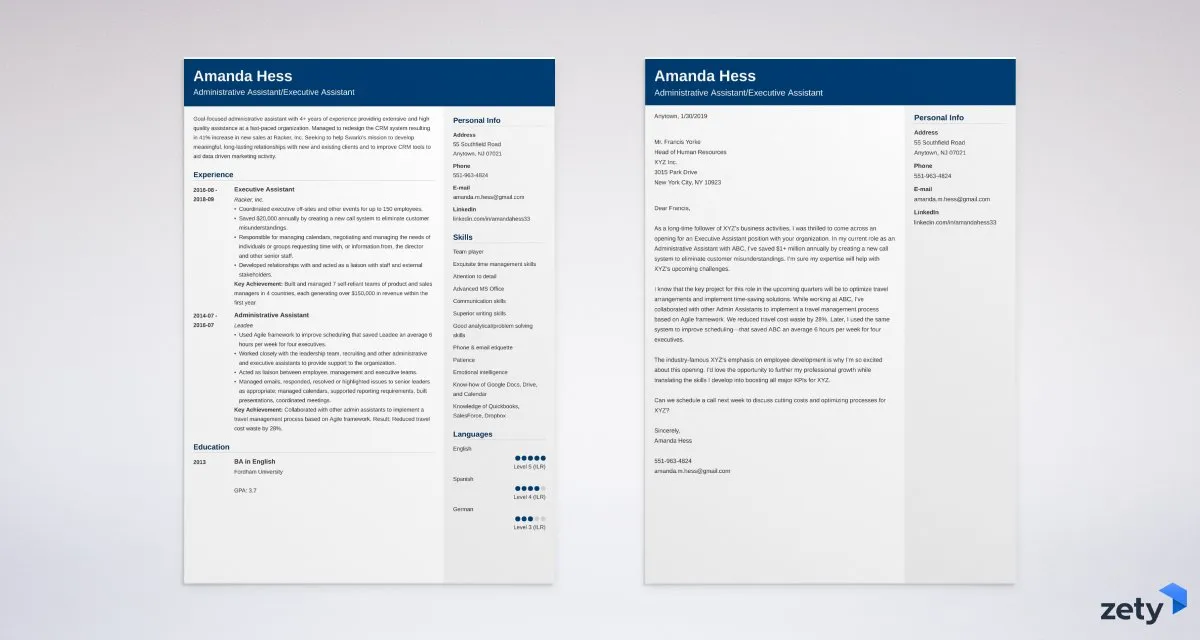What is a Business Letter Cover Letter
A business letter cover letter is a crucial document accompanying your resume when applying for a job or any professional opportunity. It serves as your first introduction to a potential employer, providing a glimpse into your personality, skills, and qualifications. Unlike a resume, which is a factual summary of your experience, a cover letter allows you to express your interest in a specific role or company and explain why you’re the ideal candidate. It showcases your communication skills and demonstrates your understanding of the job requirements and company culture. This vital document goes beyond simply listing your credentials; it provides context and personality, helping you stand out from other applicants. Properly formatted, a cover letter can significantly increase your chances of landing an interview and ultimately securing your dream job.
Importance of Business Letter Cover Letters
Cover letters are not just formalities; they are essential tools in the job application process. They provide a platform for you to highlight your achievements and tailor your skills to the specific job description. A well-crafted cover letter can make a significant difference in whether your application is considered, making it a vital component of any job search strategy. It’s a chance to show the hiring manager why you are the best fit for the position and demonstrate your written communication skills. Furthermore, a cover letter allows you to address any potential gaps in your resume or explain career transitions, giving you the opportunity to frame your experience in the most favorable light. In today’s competitive job market, a strong cover letter is often the key to unlocking opportunities and making a lasting impression.
Why Cover Letters Are Crucial

Cover letters serve as a bridge between your resume and the hiring manager’s needs. They allow you to connect your skills and experiences to the specific requirements outlined in the job description. By demonstrating how your qualifications align with the company’s needs, you can quickly capture the attention of the reader. A cover letter is your opportunity to explain why you are passionate about the role and the company, showing your enthusiasm and dedication. Moreover, it offers a chance to showcase your writing skills, which is particularly important for roles that require strong communication. By personalizing your cover letter to each job, you increase your chances of getting noticed and invited for an interview.
How Cover Letters Enhance Your Application
A well-written cover letter complements your resume by providing additional context and insights into your qualifications. It offers a chance to elaborate on your skills, achievements, and experiences in a way that your resume may not fully capture. This document is also a tool to address any concerns the hiring manager might have, such as a career gap or a change in industry. The cover letter demonstrates your understanding of the company’s values, mission, and the role you’re applying for. By showing how your goals align with the company’s objectives, you can create a compelling narrative that makes you a more attractive candidate. It is about telling a story about you and showing off your skills.
Key Components of a Business Letter Cover Letter
A well-structured business letter cover letter typically includes several key components, each serving a specific purpose in presenting your qualifications and enthusiasm. These elements work together to create a professional and compelling document that captures the hiring manager’s attention and increases your chances of securing an interview. The careful and appropriate structuring will make your cover letter more impactful and increase your chances of success.
Your Contact Information
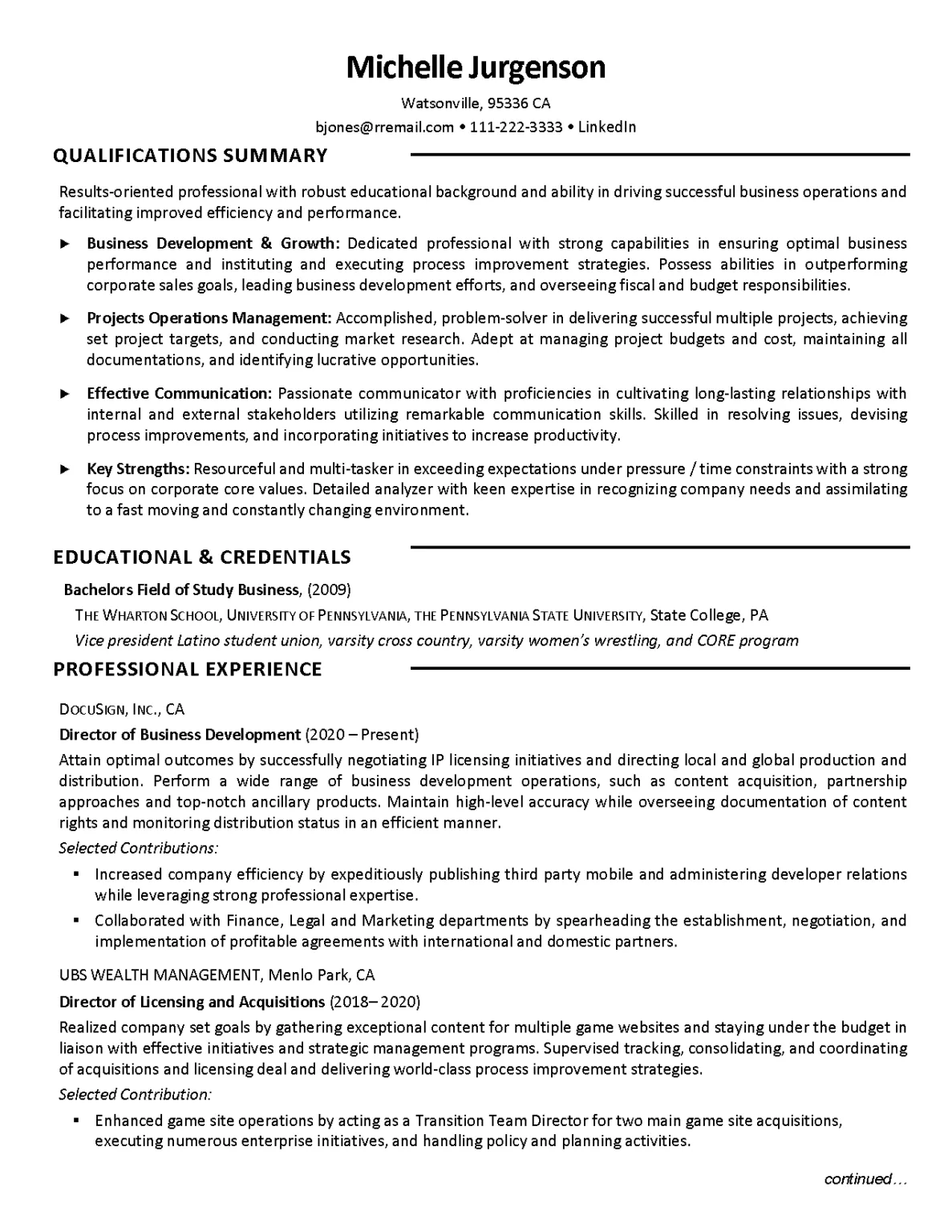
At the top of your cover letter, include your full name, address, phone number, and email address. This allows the hiring manager to easily contact you. Make sure your contact information is up-to-date and professional. Double-check the accuracy of your email address and phone number to avoid any missed communication. Consider using a professional-sounding email address; avoid nicknames or informal language. Your contact information should be clearly formatted and easy to find at the top of the page, typically aligned to the left or right.
Date and Recipient Details
Below your contact information, include the date of the letter, followed by the recipient’s name, title, company name, and address. If possible, address the letter to a specific person; if not, use the title of the hiring manager. Proper formatting is essential to create a professional look. Ensure the date is accurate and that the recipient’s information is correct. Research the hiring manager’s name and title on the company website or LinkedIn to personalize your letter. This demonstrates your attention to detail and your genuine interest in the position. Address the letter to the correct person or use a general greeting.
Salutation and Professional Greetings
Start your cover letter with a professional greeting, such as “Dear Mr./Ms./Mx. [Last Name],” if you know the hiring manager’s name. If you don’t know the name, use a general greeting like “Dear Hiring Manager” or “Dear [Department Name] Team.” Avoid overly casual greetings. Your salutation should be followed by a comma. The salutation sets the tone for the rest of your letter, so choose one that reflects the professionalism of the company and the role you are applying for. Ensure that the salutation matches your level of formality.
Body Paragraphs of a Cover Letter
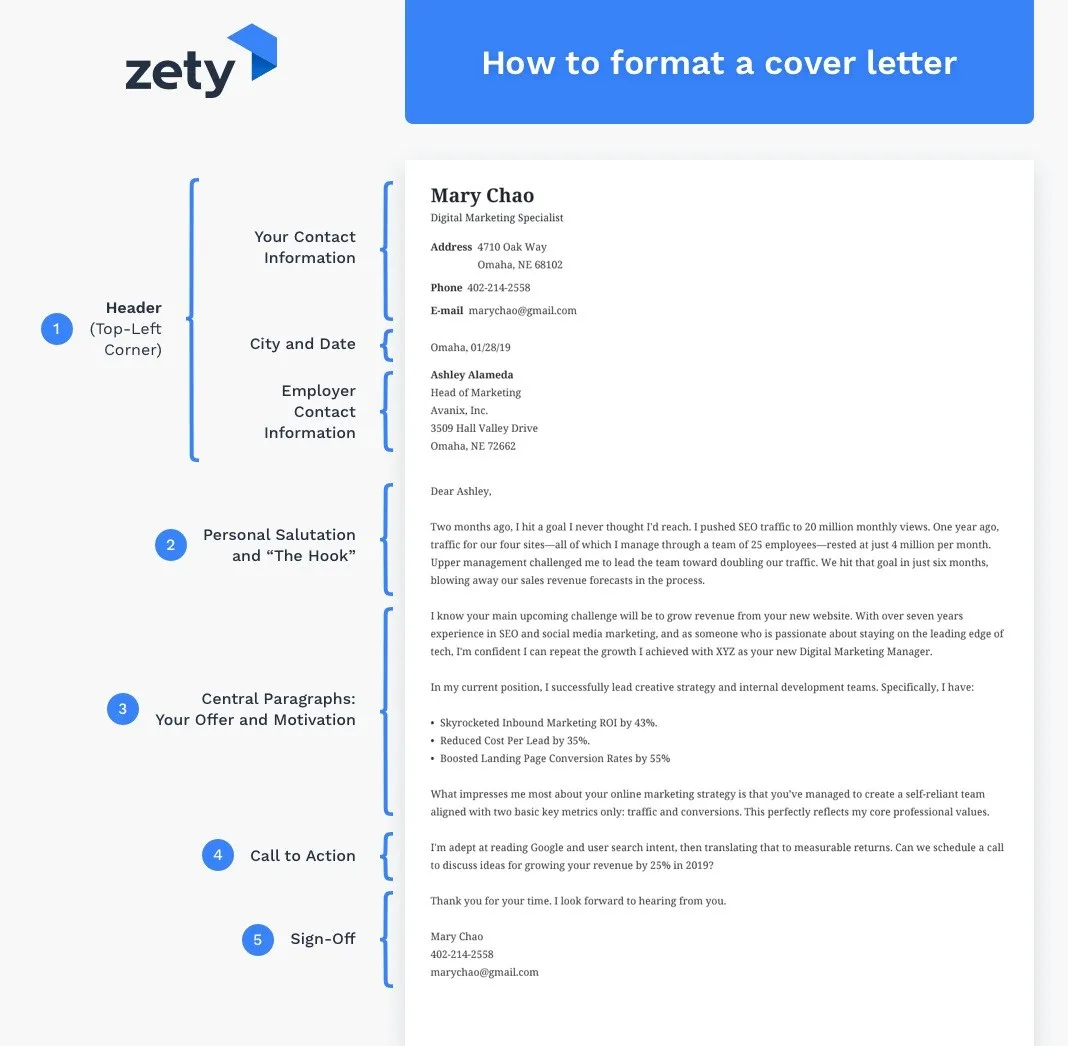
The body of your cover letter is where you sell yourself and explain why you’re a good fit for the role. Each paragraph should focus on a specific aspect of your skills, experience, and enthusiasm. Using clear and concise language will allow you to highlight your most relevant qualifications. Focus on what you can offer the company and use the job description as your guide. This section should be well-structured and easy to read, providing a compelling narrative that encourages the hiring manager to consider your application. Use a combination of strong statements to help you stand out.
Paragraph 1 Explain Your Purpose
Start your first paragraph by stating the position you’re applying for and how you learned about it. Mention where you saw the job posting and briefly express your interest in the role. Indicate your enthusiasm for the company or the industry, showing your genuine interest. Highlight one or two of your most relevant skills or experiences that align with the job requirements. The first paragraph sets the stage for the rest of your letter, so it must be clear, concise, and compelling. It must provide a roadmap for the reader.
Paragraph 2 Highlight Relevant Skills
In the second paragraph, provide more detail about your skills and experiences that match the job requirements. Refer to specific accomplishments, projects, or experiences that showcase your abilities. Quantify your achievements whenever possible by using numbers, data, or metrics to demonstrate your impact. Show how your skills and experiences have helped you achieve success in previous roles. This section should focus on the aspects of your background that align with what the employer is seeking. Be specific and provide concrete examples of your accomplishments.
Paragraph 3 Show Enthusiasm
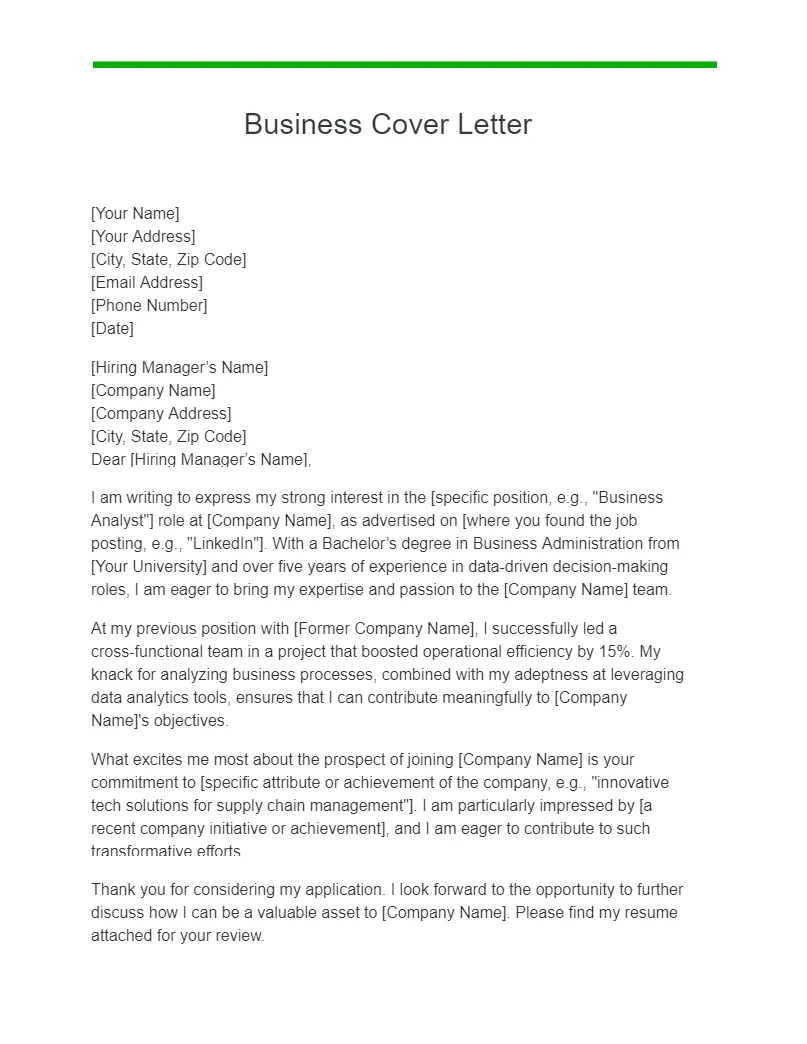
In the third paragraph, express your enthusiasm for the company and the role. Show that you understand the company’s mission, values, or recent achievements. Explain why you are passionate about working for this particular company. Highlight any research you’ve done on the company and how your goals align with theirs. Demonstrate your interest in the role and your willingness to contribute to the team. This paragraph adds personality and shows why you’re genuinely interested in the role. Personalize the letter to show you are not just sending a generic message.
Paragraph 4 Call to Action
End your cover letter with a strong call to action. State your interest in an interview and express your availability. Thank the hiring manager for their time and consideration. Reiterate your enthusiasm for the role and the company. Provide your contact information again, making it easy for the hiring manager to reach you. Use a professional closing and sign your name. Ensure your call to action is clear, concise, and confident. Encourage the hiring manager to take the next step and contact you.
Closing the Cover Letter
The closing of your cover letter is just as important as the opening. It is your last opportunity to leave a positive impression and reiterate your interest in the position. A well-crafted closing includes a formal closing phrase, your typed name, and your signature. Ensure that the closing is professional, respectful, and reflects your enthusiasm for the job. Paying careful attention to detail in the closing can significantly improve your chances of moving to the next step in the application process.
Formal Closing Phrases
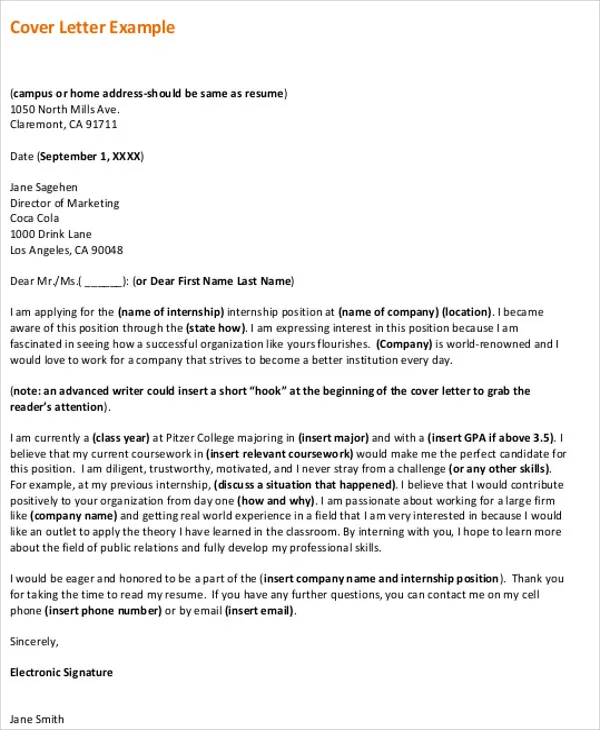
Use a formal closing phrase such as “Sincerely,” “Respectfully,” or “Best regards” before your typed name. Avoid casual closings like “Thanks” or “Cheers.” Your closing phrase should be followed by a comma. Make sure your closing phrase aligns with the tone of your cover letter. Choose a closing phrase that reflects the level of formality appropriate for the company and the position. Always sign off with a professional, formal closing.
Your Typed Name and Signature
Type your full name below your closing phrase. If you are submitting a printed cover letter, sign your name above your typed name in blue or black ink. If submitting an electronic cover letter, you can either insert a digital signature or simply type your name. Ensure that your signature is legible and professional. Your typed name should be clearly visible, and your signature should be placed directly above it. This completes the formal look of your cover letter, demonstrating your professionalism and attention to detail.
Business Letter Format Cover Letter Do’s and Don’ts
Following the do’s and avoiding the don’ts will make your cover letter stronger. Keep your cover letter professional. A cover letter is a formal document, so it’s essential to maintain a professional tone throughout. Avoid slang, jargon, or informal language. Use a clear and concise writing style. Proofread your cover letter carefully for any grammatical errors or typos. Tailor your cover letter to each job you apply for by highlighting the skills and experiences that match the job requirements. Customize your cover letter to each specific opportunity.
Do’s for a Professional Business Letter Cover Letter
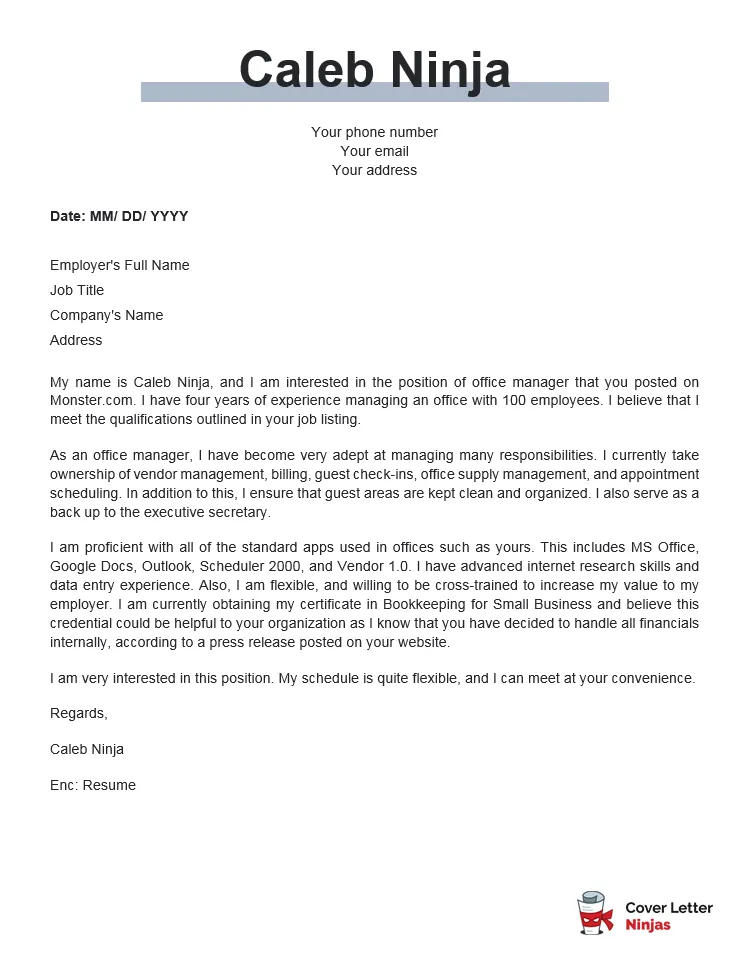
Do use a professional format with standard business letter elements. Do tailor your cover letter to each job application by highlighting the relevant skills and experiences. Do proofread your cover letter multiple times for any grammatical errors or typos. Do keep your cover letter concise and focused, aiming for one page. Do highlight your achievements and quantify your accomplishments whenever possible. Do use a clear, easy-to-read font like Times New Roman or Arial. Do show enthusiasm for the role and the company. Do include a call to action, asking for an interview. Do maintain a positive and professional tone throughout your cover letter. Do research the company and the hiring manager to personalize your letter.
Don’ts to Avoid in Your Cover Letter
Don’t use generic, cookie-cutter cover letters. Don’t include unnecessary information or irrelevant details. Don’t exceed one page in length. Don’t make any spelling or grammar errors. Don’t use jargon or overly complex language. Don’t be negative or complain about previous employers. Don’t focus on what you want; instead, focus on what you can offer the company. Don’t use informal language or slang. Don’t forget to include a call to action. Don’t send the wrong document or to the wrong person.
